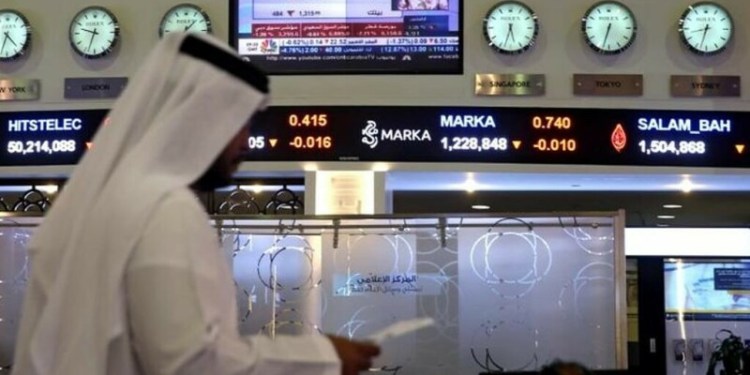NEW YORK: Gauges of global and US stock performance set fresh all-time highs on Friday, buoyed by a bright business outlook and strong corporate earnings, while the economy’s strength in continental Europe lifted the euro to a two-month high against the dollar.
German business confidence hit a record high in November, a sign Europe’s largest economy is on track for a boom, the Ifo economic institute said.
The Ifo survey helped allay concerns about the recent failure of forming a new German government and came a day after surveys of Europe’s services and manufacturing industries beat the most optimistic forecasts in Reuters polls.
The strong outlook from Europe put the euro on course for a third straight week of gains against the dollar, its best run since July. The single currency rose 0.6 percent to 1.l921.
MSCI’s all-country world index of equity markets in 47 countries rose 0.25 percent to a new record high.
The pan-European FTSEurofirst 300 index of regional shares traded little changed, as strong gains in financials were off-set by heavy losses in health care.
However, several major European country indices, including France’s CAC 40, Germany’s DAX and Spain’s IBEX all advanced.
On Wall Street, the benchmark S&P 500 and Nasdaq Composite hit records, lifted by indications of a strong start to the US holiday shopping season.
The biggest percentage gainer on the S&P 500 was department store Macy’s Inc, up 4.2 percent, while the biggest point contributor was Amazon.com, which rose 1.89 percent.
Turnout at US retailers was relatively subdued on Black Friday, with many shoppers flocking to stores to eye items in person and enjoy the festive atmosphere while waiting to do their actual bargain hunting online.
Consumer spending rose 16.8 percent year-over-year until 5 p.m. on Thursday, Adobe Analytics, which tracked four-fifths of online transactions at the top 100 US retailers.
The Dow Jones Industrial Average rose 52.2 points, or 0.22 percent, to 23,578.38. The S&P 500 gained 5.43 points, or 0.21 percent, to 2,602.51 and the Nasdaq Composite added 13.53 points, or 0.2 percent, to 6,880.89.
The dollar index fell to its lowest since Sept. 26 at 92.719 and the Japanese yen weakened 0.24 percent versus the greenback at 111.51 per dollar.
The index suffered its worst single-day decline in more than five months on Wednesday after minutes from the Federal Reserve’s latest policy meeting showed some policy makers are concerned about stubbornly weak US inflation.
Underlying dynamics point to a weaker dollar medium term, said BMO Capital Markets currency strategist Stephen Gallo, in London.
“When you have firm global risk appetite, pretty firm global growth conditions including in the euro zone and firm global commodity prices, there isn’t a lot of – if any – safe-haven demand for dollars,” Gallo said.
US Treasury yields rose slightly but stayed within a tight range they have held for the past week-and-a-half as investors focused on the subdued inflation outlook which has helped the yield curve to its flattest levels in a decade.
The benchmark 10-year note fell 6/32 in price to yield 2.3418 percent.
US light crude hit $58.92 a barrel, a more than two-year high, before easing to trade up 69 cents at $58.71.
Brent was last at $63.59, up 4 cents on the day.
Source: Brecorder.com



























